Content marketing is not a new concept. It has been around for ages, and not strictly for those of us on the internet. However, content marketing is continuously one of the best forms of sustainable marketing you can do for your business. But where do you even start? You don’t have to be a content marketer or even hire one to create an effective content marketing plan. That’s what this guide is all about: teaching you how to be effective at content marketing.
Full Disclosure: This post may contain affiliate links. If you see “(Affiliate Link)” or banners promoting products or services anywhere in this post, this means that if you choose to purchase from these links, I will earn a commission. This commission comes at no additional cost to you. I have chosen to become an affiliate for these products/services because I use them and recommend them myself. If you choose to purchase this product, you are not required to purchase through my link, but it is always very much appreciated!
In this guide, you can expect to learn:
- Content Marketing 101: What is Content Marketing?
- How to find and create excellent content
- Leveraging your content online
Even without any marketing skills, you can develop a strong, creative marketing strategy for your brand.
Let’s get right into it.
What is Content Marketing?
If you have a blog on your website or run a social media account linked to your business, you are most likely already doing some sort of content marketing, without even knowing it. Content marketing is all about…
(dramatic pause)
…creating content!
Content marketing is the methodic and strategic creation and promotion of content that provides value to your visitors and ultimately attracts more customers.
How Can Content Marketing Help Your Business? – True Story
Here’s a quick, true story that can help illustrate the concept of content marketing and ultimately help explain it’s power:
When I started getting interested in running my own online business, I learned quickly how important and impactful SEO and digital marketing can be. I don’t have much capital for my business so running ads were pretty much out of the question. This is when I started doing all kinds of research into SEO and various marketing concepts. Through my research I stumbled upon Neil Patel and all his content:
- Blog posts
- Videos
- Podcast (Marketing School)
- Newsletter (that I later signed up for)
- Ubersuggest (SEO tool for keyword and content research)
I learned a lot from all the content I consumed, and I still do, but that’s not the moral of this story.
After consuming Neil’s content for so long, I started to look at him as the one of the most reliable sources for digital marketing information.
Then I received this email:
I tuned in and the video provided a TON of great value. And then came the pitch…
You know how they all go:
- “Sign up now!“
- “Hurry before this deal ends!“
- “Special offer only to those who tuned into this live feed!“
Normally I turn the other way on these, but this time it was different. Needless to say, I bought the course. Although I didn’t make $10,000 in 90 days like the course states (my own fault, not Neil’s, the course was great!), I got a lot of value from it!
So why did I choose to purchase this course when I normally don’t spend money on things like this?
The answer is Neil’s content!
If Neil would have tried selling me on this course the very first day I signed up for his newsletter, I can GUARANTEE that I wouldn’t have bought the course.
It wasn’t until Neil built up my trust through all his great content that I felt completely comfortable spending the money to get his course.
THIS IS WHY CONTENT MARKETING WORKS!
So now that you have a solid grasp of the core aspects of marketing with content, lets dive into YOUR strategy.
Creating Content
Content marketing is obviously all about the content. The more variations you have in your content marketing system, the more likely you will be able to tap into different markets. Obviously your audience will lean towards a specific type of content (eg. a fashion company will probably see more success on Instagram because it is very visual), but using the “Be Everywhere” approach will help you reach your audience across different markets.
Side Note: What is the Be Everywhere approach? This is something that I originally heard on the Smart Passive Income Podcast with Pat Flynn and is heavily demonstrated in Gary Vaynerchuck’s marketing strategies. It is essentially how it sounds. Be Everywhere. The goal is to position yourself in as many places so that it is impossible for people to NOT see your content.
In this next section, we’ll be talking about the different types of content you can create to build around your brand.
Popular Types of Content
Determining which online content you should be posting most often will come with getting to know your audience better. Figuring out where your audience hangs out the most will be a crucial step in finding content that works. Once you get going, your audience and the market will tell you where to go.
You basically just need a launching point. Here are some examples of media, by content type, you can use for you focused marketing strategy.
Written Content
Probably one of the more commonly used types of content is written form.
Blogging or “information content” is one of the most lucrative ways to build the main content for your content marketing strategy around. Your website or blog will be the basic “hub” for the majority of your content. In many cases, every other form of content listed below will be utilized to attract more visitors to your blog or website.
There are tons of different forms of writing you can incorporate into your strategy, but here are a few of the most popular:
- Blog
- Newsletter / Email Marketing
- eBooks
- White Pages
- Social Media
Written content appeals heavily to search engines. So if you are looking to increase your organic traffic or improve your SEO, you should definitely have written content incorporated into your content marketing strategy.
Images
“A picture is worth a thousand words.”
Using images in your content can be a great way to grab the attention of your reader, visitor, viewer, etc. Studies have proven that written content with “rich media” such as images and videos tend to do better than the content without. Search Engine Journal has created a nice article about the importance of amazing visuals in your content.
Aside from standard photographs, imagery in your content can include:
- Infographics
- Slideshows
- Animated GIFs
- Graphics
Images can make your written content more appealing, attract visitors to your page, and break up large blocks and paragraphs of text, making your content easier to read.
Videos
Video content is growing more popular each year. Just looking at the trends on platforms like Facebook, Instagram, and TikTok, you can see how more and more people and platforms are jumping on the video content bandwagon.
Videos are just plain easier to consume than written content and can make for an incredible marketing strategy. Watching a video takes no work on the part of the viewer and can be much more entertaining. Not only that, but brands and marketers are becoming more involved and incorporating more video content, The State of Video Marketing in 2020.
Types of video content you can include in your strategy consist of, but aren’t limited to:
- How-Tos / Tutorial-Based
- Interview / Podcast-Style
- Animation
- Informative
- Short Clips / Highlight Reel-Style
With the growing popularity of video, brands would be smart to incorporate video of some kind into their strategy. Figure out what vibes with your audience and give it a try. You can also try searching for key terms or phrases in your industry on YouTube and see what kinds of videos other people are posting.
Podcasts
Podcasting is the new blogging. At least it seems that way.
Similarly to how everyone started getting into blogging around the same time (and has exploded into what it is now!), podcasting seems to be following a similar trend. A few years ago, I barely knew anyone who listened to podcasts. Now myself, and everyone I know has some list of “regulars” we all listen to.
Your podcast can be structured and follow a program-like style, or it can consist of shorter audio clips pulled from videos, interviews, etc. Gary Vaynerchuck’s Gary Vee Audio Experience is a prime example of your not so typical podcast. He incorporates some standard style episodes that everyone is used to, but the majority of his episodes are sound bites and clips from random encounters and videos he’s been in.
eBooks
eBooks are an increasingly popular form of content.
Before you go crazy and get upset about this one, eBooks don’t necessarily have to be 200+ page novels. Gumroad has made promoting and selling eBooks very simple. I’ve seen a lot of entrepreneurs using Gumroad as a means to make a generous profit by creating digital content in their niche.
Even if you don’t plan on selling any eBooks, writing quality strategy guides or helpful eBooks can make a great lead magnet and can help contribute to your mailing list.
Side Note: Gumroad is an excellent platform that seems to be growing rapidly. Because the barrier to entry for writing eBooks is so low, ANYBODY can write one and sell it. With that said, there is A LOT of trash on Gumroad. Don’t get me wrong, I have purchased many great eBooks from entrepreneurs there, but be careful with what you choose to buy. If you choose to sell on Gumroad, make sure you are providing value and not continuing to dilute the good content.
Social Media
Social media is the easiest form of content you can create.
Before you yell at me again, let me explain.
Social media is typically shared in small doses. A few sentences on Twitter or Facebook is all you need. Whereas a blog post can be 500-3,000+ words long. It can take a few seconds to a few minutes to share content on social media, whereas a blog post or video can take hours or days to create and publish.
Additionally, social media makes cross marketing extremely quick and simple. You can easily promote different kinds of media to many audiences in an instant.
Having said all that, if you want social media to be effective for you and benefit your brand, you need to be posting different types of media and have an effective social media marketing strategy.
Define Your Goal
Now that you have a few different content types in mind for your marketing objectives, now we can get into building our strategy.
Before you begin creating content, you need a purpose behind the content. Setting S.M.A.R.T. goals for your content marketing strategy is a great place to start.
S.M.A.R.T. is an acronym for:
Specific: You want to make sure your goal is specific. The more specific you can be with your goal, the better.
Measurable: Do you have a way to track your goal? Measuring and tracking our goal is going to be how we are able to determine the success of our content strategy.
Actionable: You have a clear set of tasks and objectives to accomplish. You don’t have to have all the right answers, but you should have a plan in place before getting started. You can always reassess and adjust if you aren’t meeting your milestones.
Relevant: Is your goal relevant to your or your brand? This should be an easy one to figure out. Does your goal make sense for your business? If not, you may need to rethink your content strategy. Realistic is another word that fits the “R”. Make sure you set realistic goals. Shooting for the moon is great, but if you over-promise and fail, it can kill your motivation.
Time-Bound: Set a deadline for yourself. Your target date should once again be realistic. You aren’t trying to build Rome in a day, but you certainly want to have a target to shoot for and be able to hold yourself accountable.
Have a Call to Action (CTA)
If you’re planning your goals right, you should have something in mind for what you’d like your visitor to do:
- Sign up for newsletter
- Subscribe to YouTube channel
- Join your online course
- Leave a comment
- Share your content online
These are examples of a call to action (CTA). When you are creating your content, there is a reason behind why you’re creating it (or at least there should be). Your CTA should be the main purpose of the content goals.
Determine what the CTA will be and where in your content you are planning to present your action for the viewer, visitor, reader.
Will it go at the end of a blog post? “Leave a comment below”
Will it be at the beginning of the video? “Before we dive in, don’t forget to subscribe to my channel…”
This may be different for each niche and each type of content you are publishing, so pay attention to what others in your industry are doing.
Once you have your goals set and your call to action is clear, it’s time for the fun part: creating the content.
Finding Content to Create
You know what types of content you can post and your goals are set, now it’s time to get into the content creation.
The next step is to develop quality content that will benefit your business. But how do you know where to find quality content marketing ideas?
Competitor Analysis / Researching the Industry
The first thing you should do when developing a content strategy, regardless if you are a new or established business, is research the industry. Pay attention to what your competitors are doing and take note of any trends happening in your industry.
Google Trends is a great place to search for content marketing trends in any given industry. For example:
If you search “Affiliate Marketing” (at the time of this writing), you can see there several different insights to look at. You can see where it is currently the most popular and you can see other related topics and queries.
This can make for a great jumping off point when deciding where to focus your content efforts.
Ahrefs is personally one of my favorite places to research my competitors.
With Ahrefs you can take a look at your direct competitors (or competitors of other popular website in your industry).
What’s even better is you can see which posts of your competitors get the most backlinks.
And you can see what your competitor’s Top Content is (most social shares). To drill down into this even further, you can sort the Top Content page by date, so you can see what content your competitors have posted most recently.
With this kind of information available, you can be sure to stay on top of what is working well for your competitors and hopefully produce just as good, if not better, content on the same topic.
Keyword Research
Another thing you should do prior to creating your content is keyword research.
You may be surprised to know that keyword research isn’t just good practice for written content only. Keyword research should be utilized in just about every type of content you create including videos, social media, and images. Yes, keywords even play a significant role in video content.
By using tools like Google’s Keyword Planner or Ahrefs (you can find a bigger list of tools and resources at the end of this post), you can find valuable information regarding which keywords to target and which topics might drive the most traffic to your website. For sake of consistency, I’ll keep using Ahrefs and our keyword “Affiliate Marketing” to illustrate this.
In Ahrefs’ Keyword Explorer, you just enter in the main topic that you are looking to create content for. Ahrefs will give you a brief summary of this keyword’s approximate search volume per month, clicks per month, cost per click (CPC), and much more.
Obviously this is a “Super Hard” keyword to rank for, but Ahrefs can give us other keyword suggestions that aren’t as difficult to rank for.
Between the different categories listed there are over 36,000 different keyword suggestions! With that kind of volume, you’re bound to find SOMETHING that is easier to rank for about our main topic Affiliate Marketing.
Once you’ve researched your competition and you have a nice bank of keywords to target in your content, it’s time to start creating.
Quality Over Quantity
If you’ve done any prior research into creating an effective content strategy, you’ve probably heard these two pieces of advice:
- Post High-Quality Content
- Post Often
Although posting consistently (notice I said “consistently” not “OFTEN”) is important, the quality of your content trumps all. The number of pieces of content is irrelevant if they’re all junk. You should never sacrifice the quality of your content to meet a quota. If this means taking a few extra days to craft the best piece of content you can, then do it!
Moral of the story: If you aren’t trying to create the highest quality content there is, then you are going to quickly get beat out by those who are.
Lucky for you, I already outlined an extremely effective strategy for creating super high-quality content: The Skyscraper Technique.
Now, I can’t take credit for coming up with this technique. That credit belongs to Brian Dean of Backlinko but is an effective strategy nonetheless. I won’t go into extreme detail about the strategy. If you want to know more about it, go check out the link above. But here’s the gist:
- When you’ve settled on a topic for your blog post, video, etc. try typing your main keyword into Google
- Take a look at what types of content other people ranking 1-10 are publishing
- Re-create that content, but MAKE IT BETTER
When using this technique it is important that you aren’t copying or duplicating the content you find. You are strictly using it as a reference, to see what’s working, and incorporating what is working into your own content.
When you start researching similar posts, pay attention to:
- Types of content being included (video, images, audio)
- How the content is structured (list post, large blocks of text, images)
- Headlines and Titles (23 ways…, Ultimate Guide…, etc.)
- Who is sharing the content on social media
- Where are the competitor post’s backlinks coming from
For example, let’s say you are writing a blog post about fitness goals. When you take a look at the top 10 results in Google, you notice 7/10 posts contain some sort of workout video. This may be a good indication that people who are searching for the term fitness goals are looking for video examples. This means you may want to include videos in your content.
Promoting Content
Now that you hit publish on that epic new content you just created, it is time to start promoting the content.
Just because you hit publish and you optimized your content for SEO doesn’t mean it’ll take off right away.
Fortunately, there is this little thing called social media that will allow you to help spread the word about your great new content. AND not only is social media a great way to promote your content and spread awareness about your brand but in order to do that, you need to create… social media CONTENT!
That’s right! So this means that you’ll be creating even more content. Luckily, creating content for social media is not quite as time-consuming as writing an epic blog post or recording and editing a 10-20 minutes YouTube video.
But keep in mind, social media is a part of your content strategy, so be sure to revisit the steps we just covered in this article when creating your social media content. Even though it’s easier to create, it still needs to be thoughtfully planned and serve a purpose to your overall content marketing strategy.
Pro Tip: If you mention any people or brands in your content, reach out and let them know after you hit publish. Shoot them a simple DM or email saying something like:
Hey [name],
I hope things are going well.
My name is [your name] with [your brand name].
I just published a new [type of content] and included [mention, link, quote, etc] from your [name of content].
If you have time, I would love to hear your thoughts. If you like it and would like to share it on social media, it would make my year!
Cheers,
[Your Name]
Many times the person will be flattered that you included them in your post (assuming you have good things to say about them) and won’t have a problem sharing your content with their followers.
Collaborate with Others in Your Industry
Collaborating online can be one of the best ways to build recognition around your brand.
Think about it: if you multiple audiences looking at your content, you have a much better chance of making it stick. Plus, it allows you to build more and stronger relationships with others in your industry or niche. In a world all about connections and “who you know,” building a strong network in your niche is extremely important.
Here are 7 types of collaborative content marketing you can try:
- Quote and Mention
- Guest Posting
- Original Contributor Quote
- Expert Roundup
- Case Studies
- Interviews
- Podcasts
If you want to read more about collaborative content marketing, go check out Linchpin SEO’s Beginners Guide to Collaborative Content Marketing. There, they go much more in-depth on the items listed above.
Content Marketing Tools and Apps
Everyone loves tools and apps that make their lives easier, especially in business. Here are some of the tools I referenced in this article, and others that I have found to be extremely helpful in content marketing and my business as a whole:
- Ahrefs: My Go-To when it comes to topic and keyword research.
- SEMRush: My next favorite SEO tool behind Ahrefs. I am an affiliate for and recommend SEMRush to many people for their SEO Writing assistant. This makes for a great all-in-one tool for those looking to take SEO seriously
- Ubersuggest: This is a fairly new tool created by Neil Patel. I used Ubersuggest frequently when it was still a free tool. They have since started charging for their service (but not nearly as expensive as the options listed above).
- Keyword Tool: This is one of the most popular keyword research tools, specifically for YouTube. I’m just getting started with YouTube content, so I don’t have much experience with this one, but it comes highly recommended by most YouTubers I have spoken to.
- Convertkit: This is an email marketing tool that I just recently switched to (formerly Mailchimp) and can’t believe I didn’t make the switch earlier. I fell in love with their product and am currently in the process of becoming an affiliate for Convertkit.
- Hunter.io: If you need a better/quicker way to find emails of potential clients (or for me, backlink outreach), Hunter is an excellent option. Just go to the page of the company you are looking for an email and let Hunter do its thing. It is free for up to 50 emails per month. If you are needing to find more than that, you’ll need to upgrade to one of their paid plans.
- Lately: This is another amazing tool that I just started using not too long ago. If you are wanting to create a strong social media strategy but don’t have the time to think up and schedule out a month’s worth of social media content, Lately’s got you. Lately uses AI to automatically generate social media content from blog posts, videos, or podcasts.
- Gumroad: If you are planning on creating and selling eBooks, or any other digital products for that matter, Gumroad is a great place to start. When you launch products on Gumroad you pick the price (or set it as free) for your products and simply promote your digital product. Even cooler, you can set up fans of your work as affiliates and have others help promote your products for you.
There are plenty of other really great tools out there, some paid and some free, but these are just a few of my favorites and most used. If you are interested in more tools and resources for growing your business, be sure to check out my resources page. Here I cover all kinds of tools that I use, not only for content marketing but to grow my business overall. Be sure to check back on that page as my resources list is constantly being updated with what I’m using and enjoying.
Conclusion
Regardless of what business you’re in, content marketing makes up a large part of your overall marketing structure. In this post you should have learned:
- What content marketing is
- There are many different types of content marketing (written content, video, images, etc.) that you can use in your strategy
- You need to set clear, specific goals for your content strategy and make sure you are basing your goals around a purposeful call to action
- How to find content ideas using keyword research and competitor analysis
- The importance of collaborating and promoting your content through various channels online
I would love to know what you thought about these content marketing tips! Did it help you better understand content marketing and help get you moving in the right direction?
Let me know in the comments below!
If you found this post helpful, I would love it if you shared it on social media (see what I did there? – CTA? lol) so others might benefit from the information.



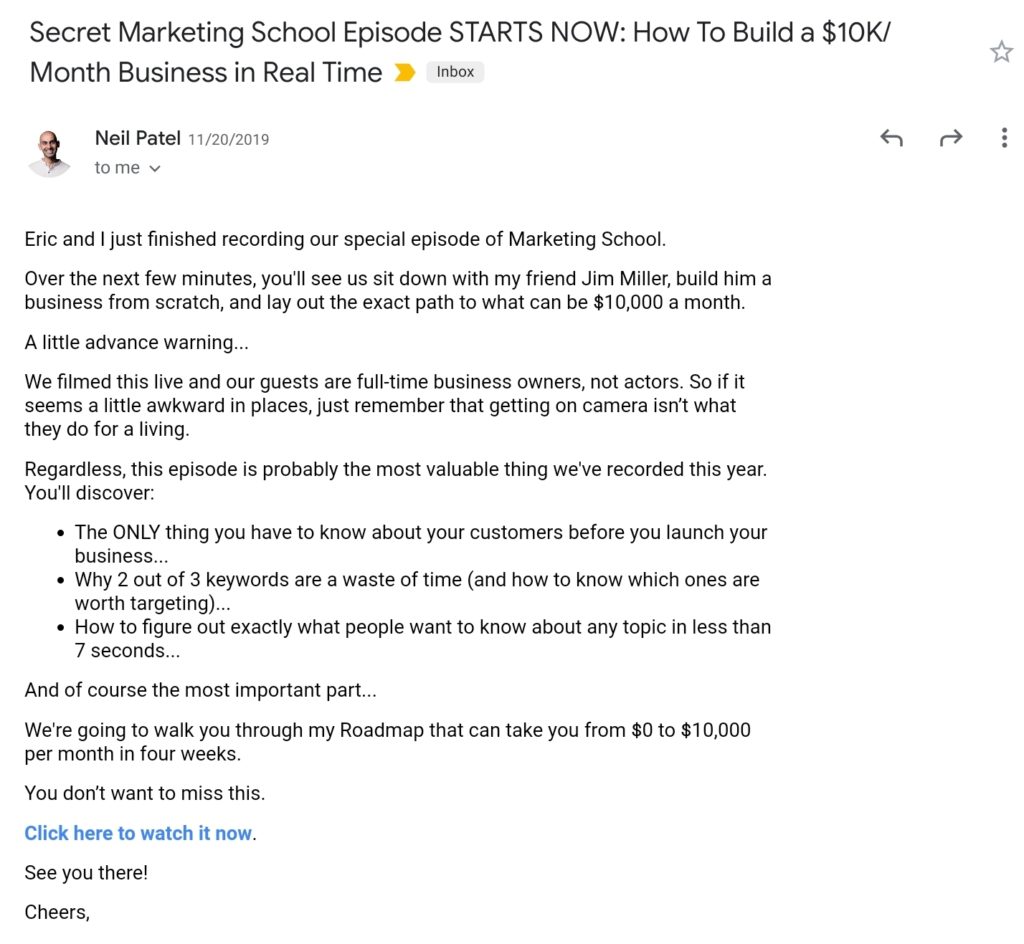


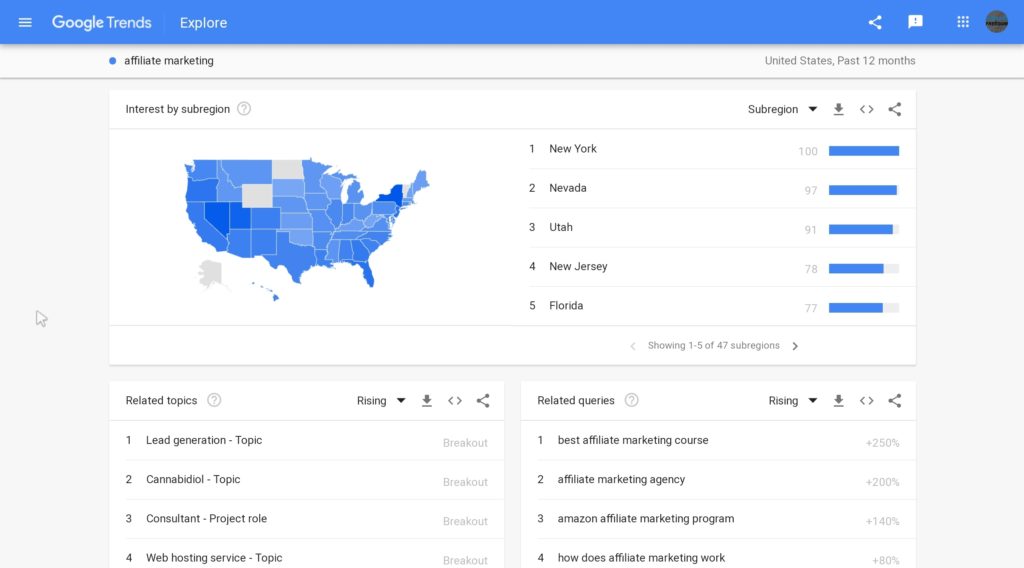
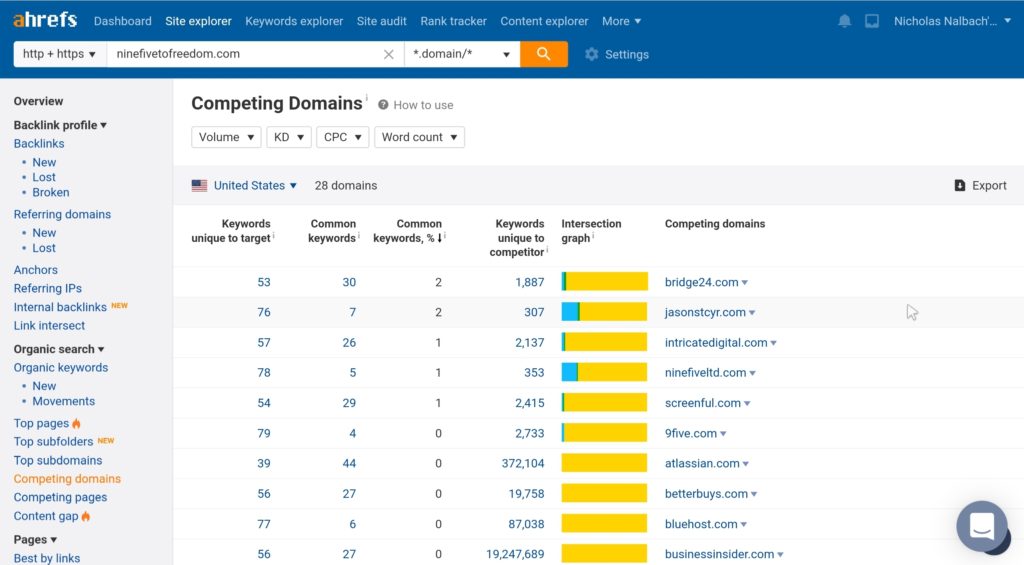
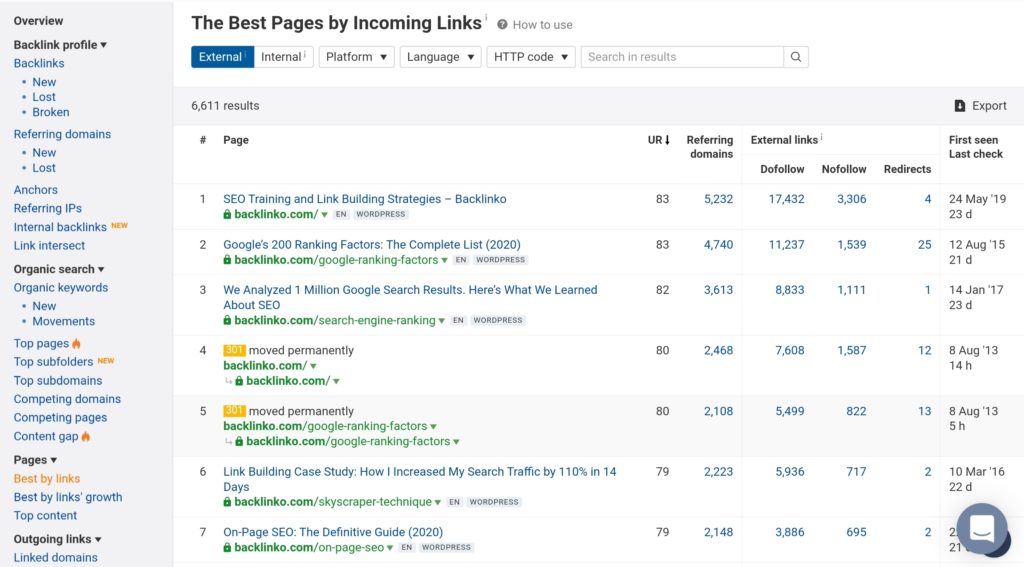
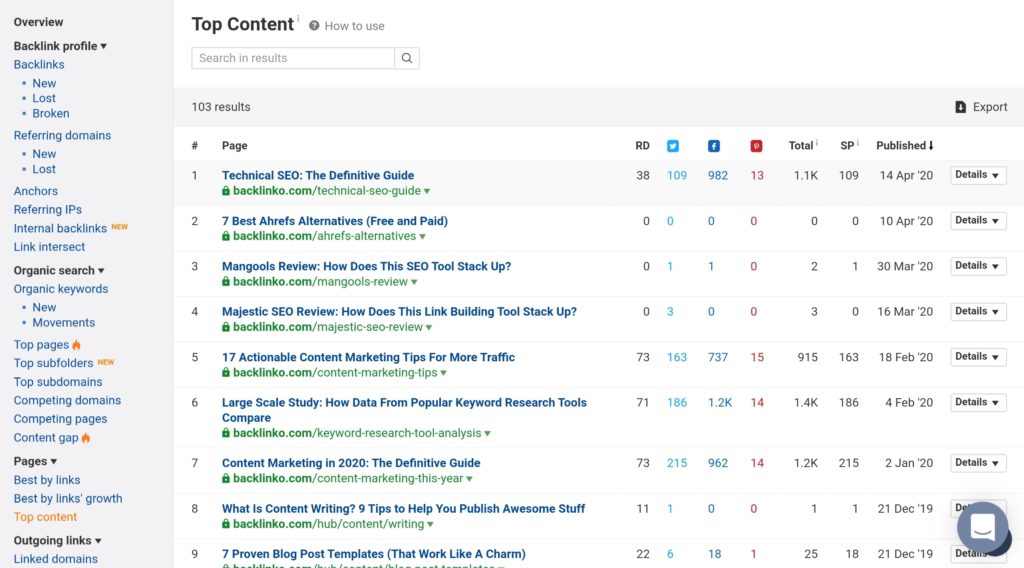
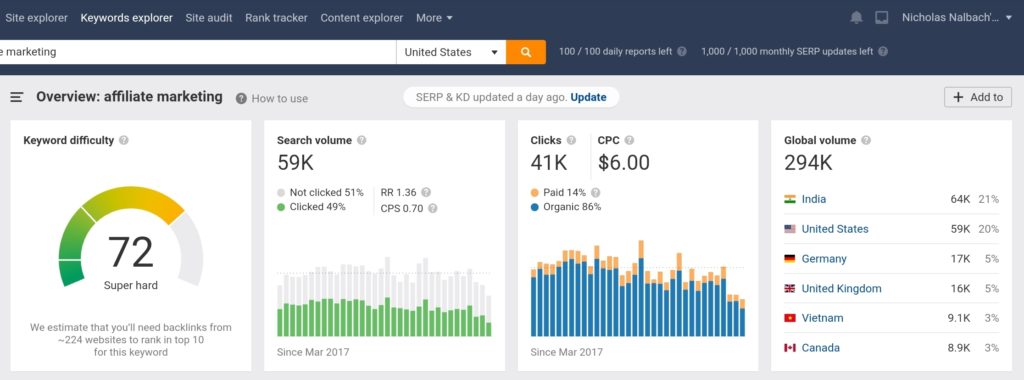






0 Comments